Data migration is no longer just a technical task — it’s a critical business function that impacts everything from operational efficiency to customer experience. Whether you’re moving to the cloud, upgrading your CRM, or modernizing outdated systems, the stakes are high. With every move comes the potential for costly downtime, data loss, compatibility issues, and unforeseen expenses.
The challenge lies in choosing the right tool to navigate this complexity. With a vast array of options — cloud-based, on-premises, and open-source solutions — it can be overwhelming to figure out which data migration software truly meets your needs in 2025.
This guide aims to cut through the noise. We’ll review 10 of the most widely-used data migration tools, examining their strengths, limitations, and ideal applications. By the end, you’ll have a clear framework for evaluating and selecting the right tool, helping you avoid common pitfalls and ensure a smooth, successful migration.
Table of contents
- What Is Data Migration?
- Why the Right Data Migration Tool is Your Project’s MVP
- What are Database Migration Tools?
- Different Types of Database Migration Tools
- 4 Best Cloud-based Migration Tools
- Top 3 On-premise Migration Tools
- Top 3 Open Source Migration Tools
- Top 3 ETL/ELT Migration Tools
- The Ultimate Checklist: Key Features to Demand from Your Data Migration Tool
- How to Select the Right Data Migration Software?
- Conclusion
What Is Data Migration?
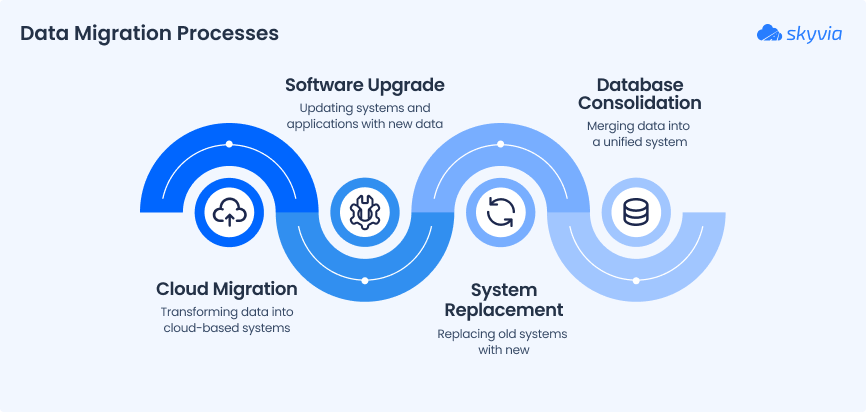
Moving information from one platform, format, or storage location to another is called “migration.” We use it during:
- Cloud migration.
- Software upgrade.
- System replacement.
- Consolidating multiple databases into a single source of truth.
Sounds simple, but it means reformatting, validating, cleaning, and securing insights, especially when moving between platforms that don’t speak the same “language.”
Done right, such a process helps users streamline operations, reduce redundancy, and improve info accuracy.
Done wrong, it leads to broken systems, lost data, and a lot of trouble. That’s why having the right tools and a well-thought-out plan matters more than ever.
Why the Right Data Migration Tool is Your Project’s MVP
Data migration is one of the most critical steps in any system overhaul or upgrade. It can make or break the success of your project.
The right migration tool is essential for ensuring smooth execution, avoiding costly delays, and achieving the desired outcomes. Let’s break down why choosing the right data migration tool is truly the MVP of your project.
Ensuring Data Integrity and Accuracy (The #1 Priority)
When transferring information, ensuring its integrity and accuracy is non-negotiable. Even a small error or inconsistency during the process can lead to significant disruptions, such as corrupt records, mismatched datasets, or even loss of critical data.
The ideal tool ensures that everything is validated and transformed correctly, safeguarding quality throughout the entire transfer. You want to guarantee that your information remains intact and reliable at every stage of the transition.
Minimizing Downtime & Business Disruption
In today’s fast-paced environment, any amount of downtime can be costly. Every minute spent offline means lost productivity, frustrated employees, and potentially disgruntled customers.
A robust solution helps minimize interruptions by automating the transfer process, reducing the need for manual involvement.
Some tools offer real-time syncing or incremental loading, ensuring that you can continue operations without significant downtime. With the right tool, you can execute the move without halting your daily business functions.
Optimizing Costs and Resources
This type of initiative can quickly become costly, especially when unforeseen issues arise. The right software helps optimize your resources, preventing unnecessary expenditures. Whether it’s reducing manual labor or minimizing costly mistakes, the tool you choose should streamline the process.
Many modern solutions leverage cloud-based capabilities, offering flexible pricing models that scale with your needs. This allows you to pay only for what you use, improving both budgeting and resource allocation, and making the entire process more efficient.
Enhancing Security and Compliance Throughout the Transition
Security and regulatory compliance are always top-of-mind during large-scale data transfers. The risk of exposing sensitive information or violating compliance requirements can grow during these processes.
A reliable solution enhances security by offering encryption, role-based access control, and audit trails. These features ensure that your data remains protected throughout its movement, reducing the risk of breaches and ensuring compliance with laws like GDPR, HIPAA, and others.
Scalability for Current Needs and Future Growth
Your business is constantly evolving, and so should the tool you use to handle these projects. Whether you’re transferring a small batch or managing a complex, large-scale solution, the software should be able to scale with your changing needs.
The ideal tool will handle both your current requirements and future expansions without requiring a complete overhaul. Scalability ensures that your approach remains sustainable as your business grows and your data volumes increase.
Boosting Team Productivity and Reducing Manual Effort
This process is often labor-intensive, especially when relying on manual entry or custom coding. The right solution eliminates much of the manual work by automating the steps involved, allowing your team to focus on higher-value tasks.
By reducing time spent on administrative processes, employees can concentrate on driving business results instead of managing tedious technical work. In essence, an efficient system boosts productivity and helps ensure that your project moves forward without unnecessary delays.
What are Database Migration Tools?
There are software solutions that move insights between different databases or platforms quickly, safely, and with minimal disruption. Whether upgrading to a newer system, switching to a different database engine, or moving from on-prem to the cloud, they take the heavy lifting off the plate.
These systems handle many tasks, from schema conversion and data transfer to validation and synchronization. Many also provide users with automation, scheduling, and monitoring features to avoid information loss, downtime, or compatibility issues.
Depending on the project, you might need something lightweight, simple, enterprise-grade, and deeply customizable. That’s where understanding the different types of tools matters.
Different Types of Database Migration Tools
Not all migration software is built in the same way. Depending on each business’s setup and goal, companies choose a solution that matches their infrastructure and resources.
- Cloud-based systems are ideal for teams that want a quick setup, automated workflows, and scalability without worrying about hardware or updates.
- On-premise software is perfect for businesses with strict security requirements, complex legacy systems, or limited internet access.
- Open-source ones are often free to use but may require more technical expertise to set up and maintain.
- ETL/ELT tools not only migrate data but also perform transformations and ensure it’s ready for analysis.
Let’s walk through the top tools in each category to help you find the best fit.
4 Best Cloud-based Migration Tools
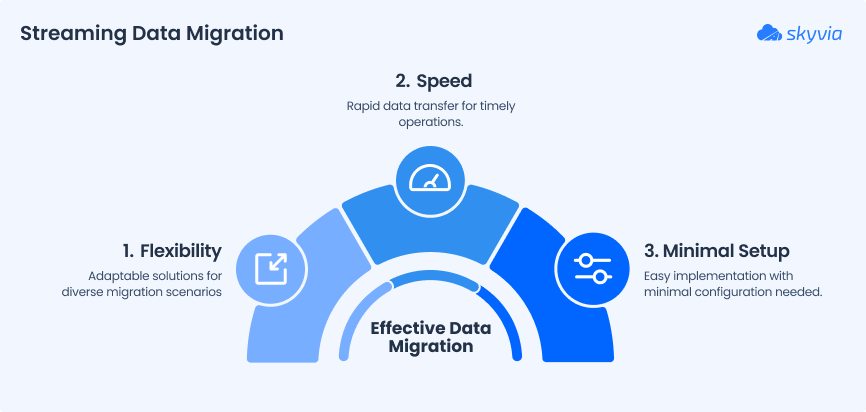
Such migration software is a go-to choice for modern teams that require:
- Flexibility.
- Speed.
- Minimal setup.
Since these tools run in the cloud, users don’t have to worry about installation, updates, or infrastructure; they just connect data sources and let the tool handle the rest.
They’re handy for SaaS-heavy environments, distributed teams, and businesses scaling quickly.
Most offer automation, scheduling, and real-time syncing, making them great for ongoing data workflows, not just one-time transfers.
Next, we’ll look at four of the most popular cloud-based migration tools in 2025: Skyvia, Fivetran, Xplenty, and AWS Data Pipeline.
Skyvia
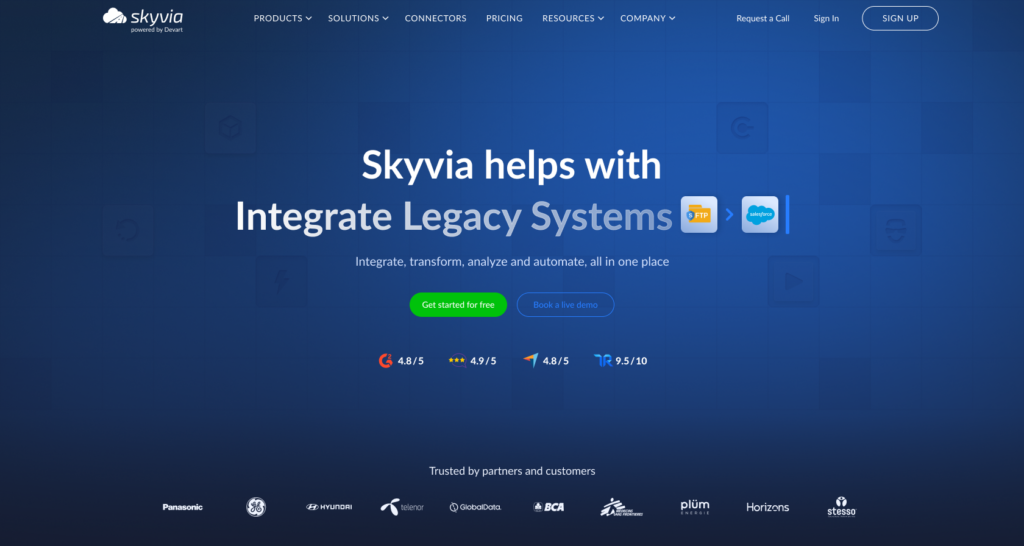
Skyvia is a no-code cloud data integration platform that supports:
- ETL.
- ELT.
- Reverse ETL.
- Replication.
- Synchronization.
- Data Flow
- Control Flow.
It provides over 200 connectors, including MySQL, Salesforce, HubSpot, Google Sheets, and many more.
Skyvia’s clean interface and drag-and-drop logic make it easy for non-technical users while offering advanced features for more complex pipelines.
It’s perfect for businesses that want fast results without relying on developers. Plus, its cloud-based infrastructure means users can manage everything from a browser.
The tool offers a flexible range of pricing plans, starting with a free tier for light use, followed by paid plans beginning at $79/month. Higher-tier options are available for businesses needing more rows, connectors, or advanced scheduling.
Fivetran
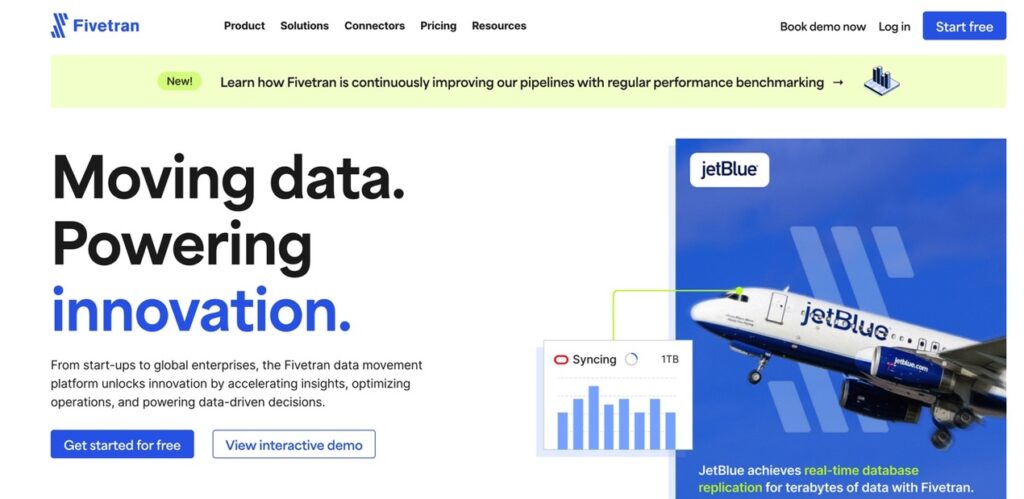
It’s a fully managed ELT tool built for speed and reliability. It connects with 500+ sources and automatically syncs data into the destination warehouse or database.
Once set up, it handles schema changes and pipeline maintenance with little human input.
Fivetran is a good choice for data teams that want hands-off syncing and high-volume reliability, but it comes at a premium price, especially at scale.
Fivetran’s price is based on monthly active rows (MAR), meaning the number of new or updated records. Plans start around $300/month, but the cost scales quickly with usage. A free plan is available for light use (up to 500K MAR/month).
Xplenty
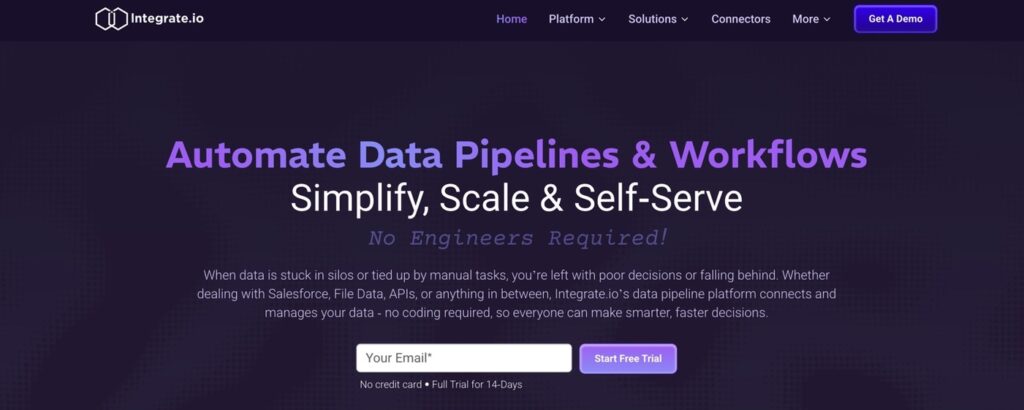
Xplenty, now part of the Integrate.io platform, is a user-friendly ETL tool that helps businesses move data between cloud sources, databases, and SaaS apps. It balances simplicity in customization with a visual interface, low-code options, and built-in monitoring.
It’s a solid choice for teams that want powerful workflows without the infrastructure headache.
The platform offers custom pricing based on data volume and connector usage, with most packages starting around $1200/month. A free trial is available.
AWS Data Pipeline
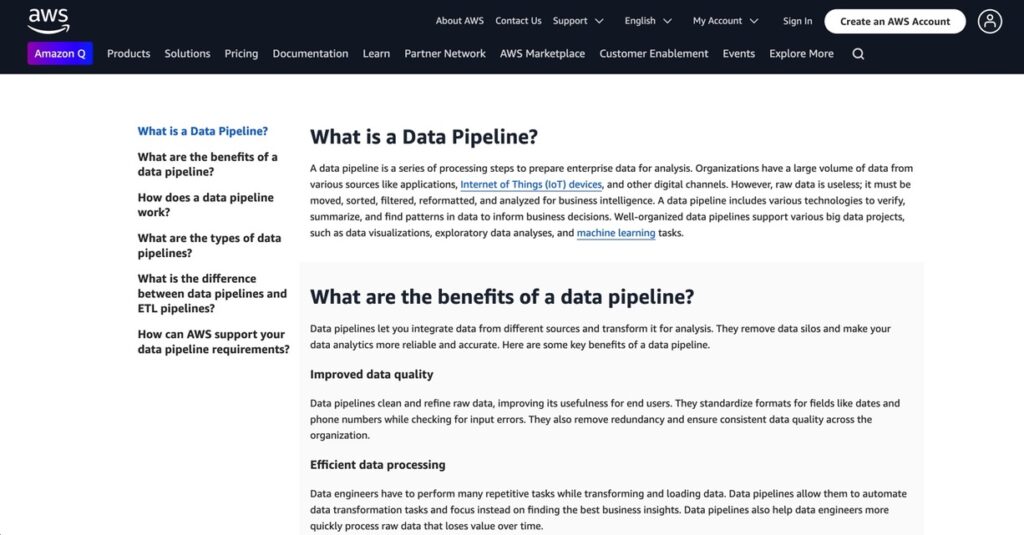
That’s Amazon’s native tool for moving and transforming data within the AWS ecosystem. It integrates well with services like S3, Redshift, RDS, and EMR, and supports complex job scheduling.
While it’s extremely powerful, it’s more suited for teams already familiar with AWS architecture and comfortable managing infrastructure-as-code.
AWS Data Pipeline charges based on pipeline activity. It starts at $1/month per pipeline, but costs vary depending on frequency, region, and AWS resource usage.
Pros of Cloud-based Migration Tools
- Quick to deploy. No installation or local setup is required.
- Scalable and flexible. Easily handle growing data needs across multiple cloud platforms.
- Automation-friendly. Most offer built-in scheduling, monitoring, and error handling.
- Accessible from anywhere. Great for distributed teams and remote operations.
- User-friendly interfaces. Many support no-code/low-code workflows for business users.
- Reduced infrastructure maintenance. The vendor manages uptime, updates, and scalability.
Cons of Cloud-based Migration Tools
- They can get expensive at scale. Especially for tools that charge by data volume or usage.
- Limited control. Less customization compared to self-hosted or code-first solutions.
- Internet-dependent. Relies on strong and stable connectivity for large transfers.
- Vendor lock-in risk. Migrating away from a cloud-based solution later can be tricky.
- Less suited for sensitive on-premise-only environments. Not ideal for companies with strict data residency or security regulations.
Top 3 On-premise Migration Tools
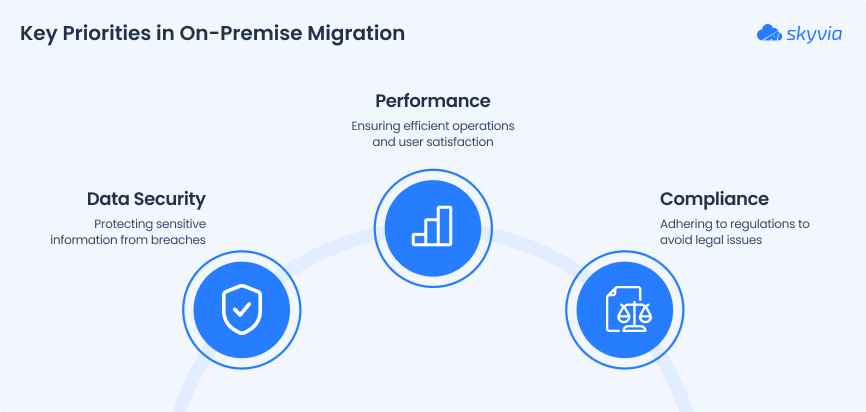
While cloud-based tools are popular for their flexibility, many businesses, especially large enterprises or those in regulated industries, still prefer on-premise migration tools. These platforms are installed and managed locally, offering more control over:
- Data Security.
- Performance.
- Compliance.
They’re particularly useful when dealing with sensitive legacy systems or strict internal policies that prevent data from moving through the cloud. Though they require more setup and IT involvement, their robustness and customizability make them a solid choice for complex or high-stakes migrations.
Three of the most widely used on-premise data migration tools in 2025 are Informatica PowerCenter, Talend Data Fabric, and Oracle Data Integrator.
Informatica PowerCenter
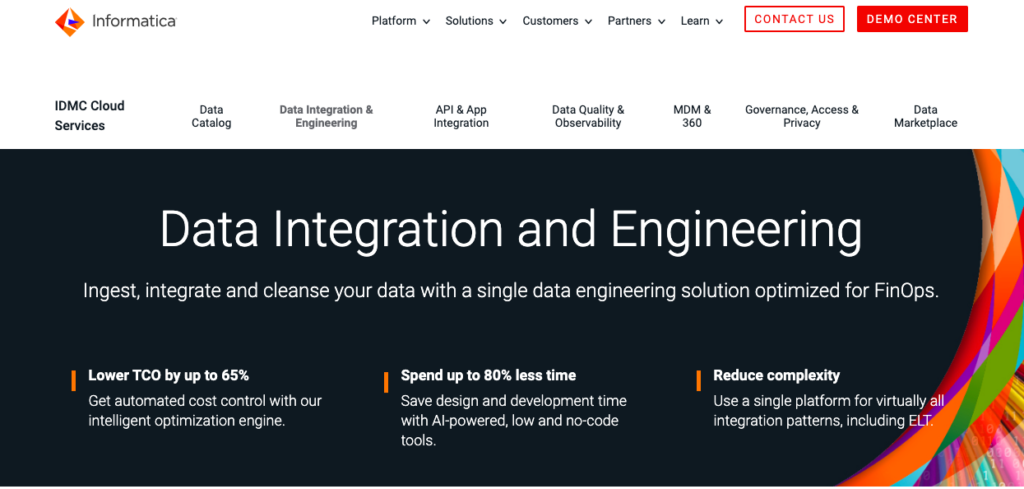
It’s a powerful, enterprise-grade data integration platform known for its stability, scalability, and broad connector support. The system successfully manages large, mission-critical migration projects that require high availability and strong governance.
PowerCenter is packed with tools for:
- Transformation.
- Profiling.
- Workflow design.
- Performance monitoring.
Custom pricing is based on enterprise requirements and deployment size. Generally, it starts in the five-figure range annually.
Talend Data Fabric
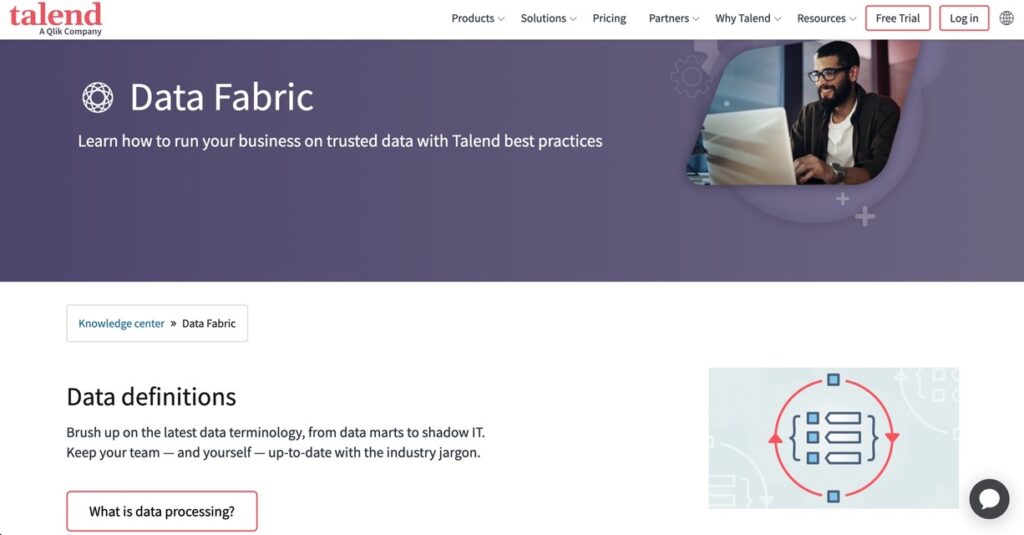
The platform provides multiple solutions as a part of its data integration services. It allows connecting from most data sources and managing the data cluster on-site and in the cloud.
The system offers features like data cleaning, data governance, data integration, etc., and supports over 1,000 connectors to choose from and process the data.
The pricing starts at $1,170/month, depending on the edition and deployment type. An enterprise plan is available for large-scale deployments.
Oracle Data Integrator (ODI)
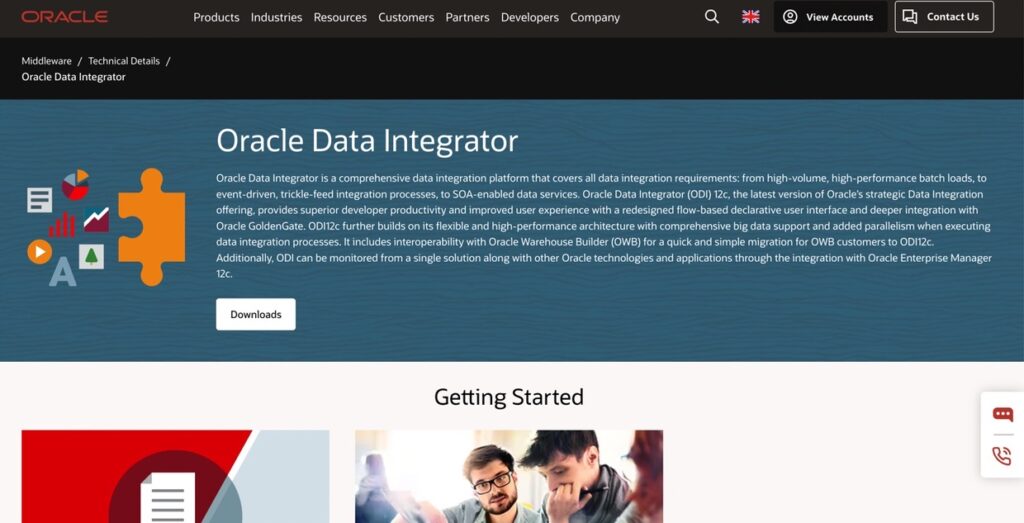
This data integration platform is typically used for all data integration services. It can connect with multiple sources to perform various tasks like:
- Data synchronization.
- Transformation.
- Quality management.
- Data loading across heterogeneous systems.
Being a product of Oracle, it also enables easier integration with other Oracle products like Oracle GoldenGate for real-time data replication and Oracle Database services.
It provides documentation and an extensive knowledge base for users getting started with the platform. However, setup and customization often require skilled developers or database administrators.
The platform doesn’t offer a free version of ODI. The Oracle Data Integrator Enterprise Edition is typically priced at around $23,000–30,000 per processor license, plus additional support and maintenance fees. Precise pricing depends on your Oracle licensing agreement.
Pros of On-premise Migration Tools
- Full data control. Everything stays behind your firewall, which is ideal for highly sensitive environments.
- Better compliance. Perfect for industries with strict regulatory or data residency requirements.
- Strong performance. Optimized for high-throughput, enterprise-grade workloads.
- Legacy system compatibility. Designed to work with older infrastructure or customized internal systems.
- Robust monitoring and auditing. Advanced tracking, logging, and error-handling features built in.
Cons of On-premise Migration Tools
- Expensive to implement. High upfront licensing, hardware, and maintenance costs.
- Slower to deploy. Installation and setup can be complex and time-consuming.
- Requires IT resources. Ongoing support, upgrades, and system maintenance depend on in-house teams.
- Less flexible. Scaling up or adapting to new tools often involves more manual work.
- Not cloud-native. May lack seamless integration with cloud apps or hybrid environments without customization.
Top 3 Open Source Migration Tools
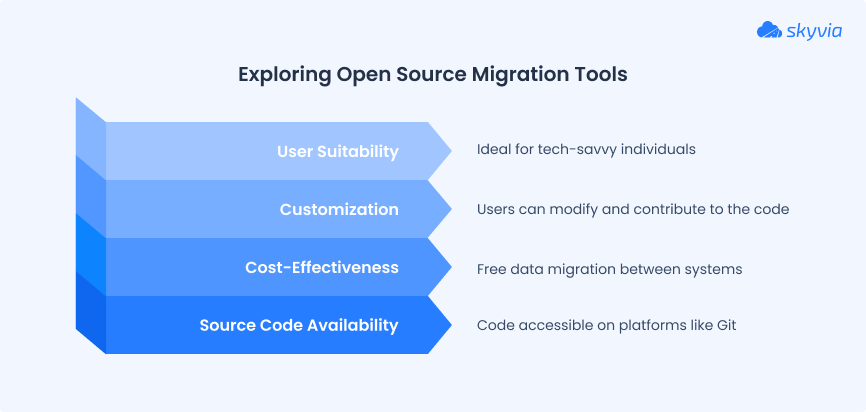
This software is driven by the developers’ community, who work together to create and improve the tools and prefer:
- Complete control.
- Transparency.
- The ability to customize workflows without vendor lock-in.
The source code of these tools is typically available on a central repository like Git. Some licensed solutions also use these source codes as the underlying code for their software.
The open-source tools allow data to be migrated between different systems at no cost. The users can also modify or contribute to the open-source code.
These tools suit tech-savvy people who can understand the open-source code and implement the changes if required.
Let’s look at three popular open-source database and data migration tools: Apache NiFi, Airbyte, and Apache Airflow.
Apache NiFi
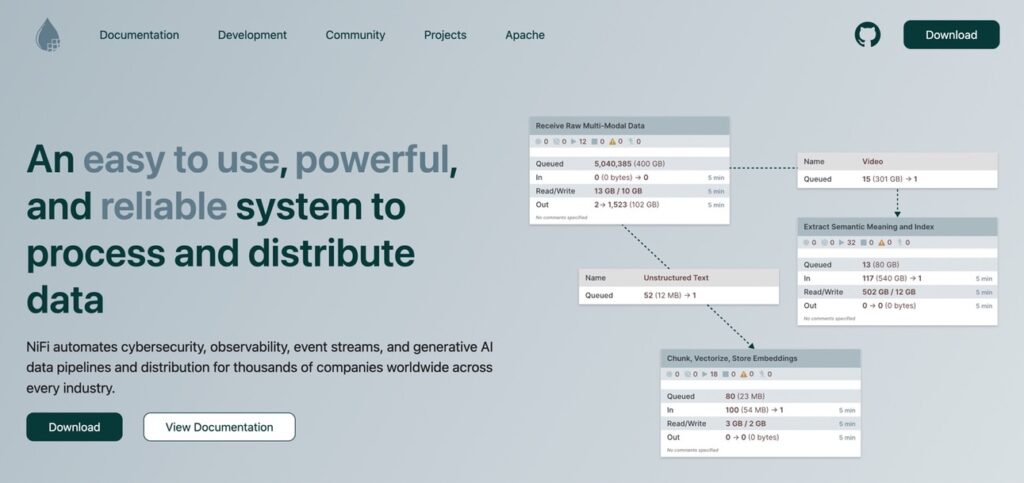
This robust data flow management tool supports real-time and batch data movement between systems. It features a drag-and-drop interface, data provenance tracking, and fine-grained control over flow behavior.
The user interface represents the flow through directed graphs that are easy to understand, modify, and monitor. It allows the flow of these graphs to be changed at runtime itself, making it more configurable.
Such a platform is perfect for teams who want to automate complex data workflows.
It’s free and open-source. Paid support is available through Cloudera.
Airbyte
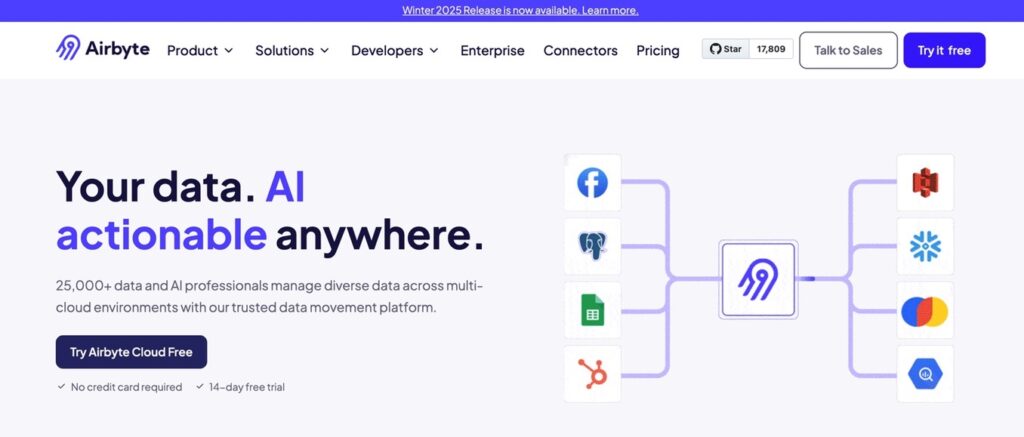
This fast-growing open-source ELT tool makes data integration accessible and community-driven. It offers over 300 connectors and allows users to build and deploy new ones easily. Airbyte is highly modular, supports cloud or local deployment, and integrates well with modern data stacks.
The tool comes in an open-source version and a commercialized cloud version (Airbyte Cloud) that starts at around $2.50/credit, depending on usage.
Apache Airflow
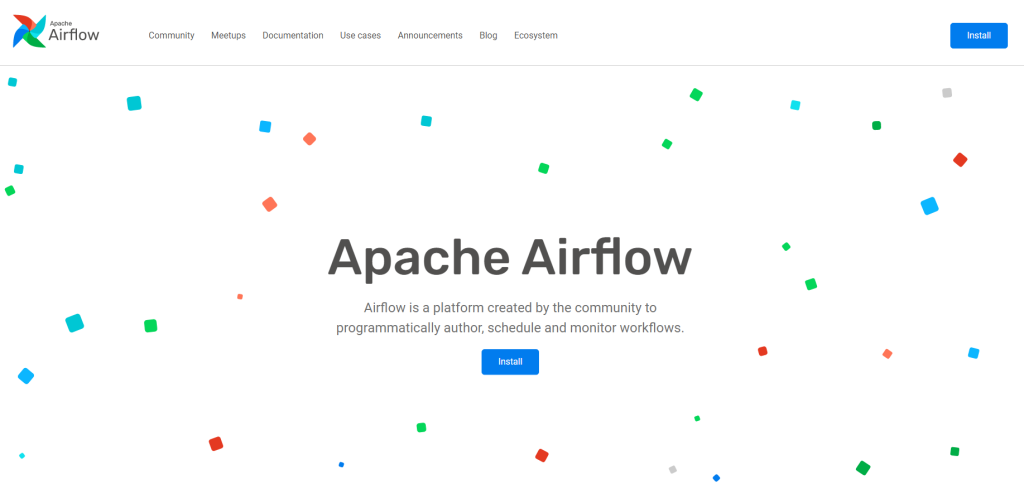
This open-source orchestration tool is widely used for managing complex data pipelines. It’s not a data migration tool per se, but it’s often used to schedule and monitor ETL/ELT jobs. Developers love its Python-based Directed Acyclic Graphs (DAG) structure, flexibility, and integrations with cloud and on-prem tools.
It can also connect with the popular data sources that allow the data to be migrated between different databases.
The solution is free and open-source. Managed services are available via providers like Astronomer and Google Cloud Composer.
Pros of Open Source Migration Tools
- Free to use. No license fees, making them ideal for startups and budget-conscious teams.
- Highly customizable. Developers can tweak the code, create custom connectors, and build tailored workflows.
- Community-driven. Backed by active open-source communities offering plugins, updates, and shared solutions.
- Flexible deployment. Can be hosted on-premise, in the cloud, or in hybrid environments.
- Ideal for tech-savvy teams. Complete control over pipeline behavior, scheduling, and orchestration.
Cons of Open Source Migration Tools
- Requires technical skills. Not beginner-friendly; setup and maintenance often demand developer involvement.
- Limited user interface. Most tools prioritize flexibility over visual, drag-and-drop features.
- There is no official support. Users are on their own for debugging or scaling unless using a managed service.
- Integration gaps. May lack pre-built connectors or require additional tools to cover full ETL needs.
- More time-consuming to configure. Expect longer implementation cycles compared to commercial platforms.
Top 3 ETL/ELT Migration Tools
ETL/ELT migration tools are designed to not only transfer data but also handle data transformation and enrichment during the migration process. These tools are ideal for businesses that need more than just data movement; they require powerful data integration and processing capabilities.
Key benefits of ETL/ELT tools include:
- Automation: These tools automate both the extraction of data and its transformation, reducing manual intervention and human error.
- Flexibility: They offer more flexibility when it comes to transforming and cleaning data before it reaches its destination.
- Scalability: Ideal for businesses that need to process large volumes of data or real-time data pipelines.
ETL/ELT solutions are especially beneficial for organizations managing data from multiple sources, as they simplify the task of mapping, transforming, and integrating disparate data. These tools are also effective for complex data workflows that require pre-defined transformations or enrichment.
Let’s explore three of the top ETL/ELT migration tools in 2025: Hevo, Stitch and Matillion.
Hevo

Hevo is a no-code, fully managed ETL platform designed to automate data pipelines across multiple sources and destinations. Hevo supports:
- ETL and ELT.
- Data Replication.
- Real-time Syncing.
- Data Transformation.
Hevo offers over 150 connectors, including popular platforms like Snowflake, BigQuery, Salesforce, Shopify, and more. With its easy-to-use interface and real-time data syncing, Hevo simplifies the integration process for businesses that need to keep their data pipelines up to date without manual effort.
The platform also provides features for automated error handling, schema management, and monitoring to ensure a smooth data transfer process. Hevo’s cloud-based model allows users to manage everything remotely, offering flexibility and scalability as your data grows.
Hevo offers pricing based on usage, with a free plan for small businesses and paid plans starting at $249/month for more advanced needs like increased volume and more connectors.
Stitch
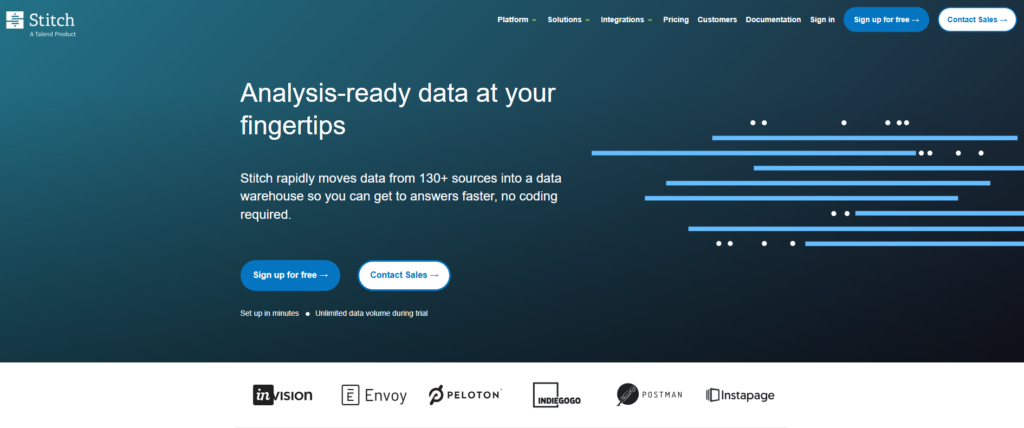
Stitch is a cloud-based, fully managed ETL platform designed to automate the process of integrating and moving data across various sources. It supports ETL, data replication, and data syncing, offering over 130 connectors to popular platforms such as Google Analytics, Salesforce, MySQL, Snowflake, and more. Stitch enables businesses to easily extract, transform, and load data into cloud data warehouses with minimal setup.
With its simple, user-friendly interface, Stitch is ideal for businesses that need to quickly implement data workflows without requiring technical expertise. Its cloud-based model reduces the need for on-premise infrastructure, and it provides scalability to accommodate growing data needs.
The tool’s flexible pricing makes it accessible to businesses of all sizes, with a free tier available for light use and paid plans starting at $100/month for larger datasets and additional features.
However, Stitch’s focus is primarily on extracting and loading data, so businesses that require complex data transformation processes may need to complement it with additional tools or custom workflows. It’s also worth noting that Stitch operates solely in the cloud, which may not be suitable for organizations with strict data security policies that require on-premise solutions.
Matillion
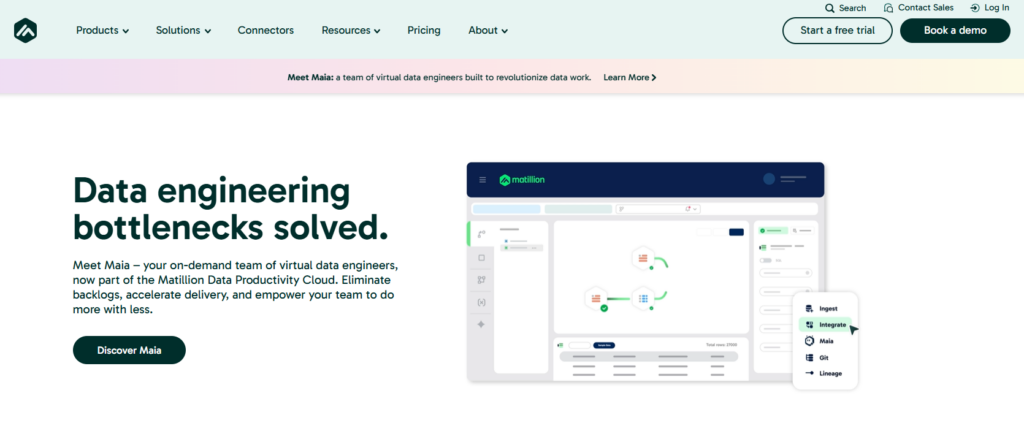
Matillion is a cloud-native ETL tool designed for powerful data transformation in cloud environments. It specializes in:
- ETL and ELT.
- Data Integration.
- Data Transformation for cloud data warehouses like Snowflake, Google BigQuery, and Amazon Redshift.
Matillion’s interface is user-friendly, with a drag-and-drop design that allows users to visually build their data workflows. It supports a wide range of connectors to integrate with data sources such as Salesforce, SQL databases, and various cloud services.
Matillion excels at processing large volumes of data and performing complex transformations in cloud data warehouses. Its cloud-first design means it scales efficiently with the needs of businesses and offers a high level of flexibility for handling advanced data workflows.
Matillion is offered with flexible pricing starting at $1,000/month, with different tiers for businesses needing more advanced features, higher usage limits, and additional support options.
The Ultimate Checklist: Key Features to Demand from Your Data Migration Tool
Choosing the right migration tool is crucial for a smooth, efficient process. To ensure success, here are the essential features your tool should offer:
- Connectivity & Compatibility. Your tool should support a wide range of connectors for various data sources, including databases, cloud storage, apps, and APIs, both SQL and NoSQL.
- Data Transformation Capabilities. Look for features that allow you to map, cleanse, validate, and enrich your data, ensuring it’s ready for the destination system.
- Scalability & Performance. Ensure your tool can handle large datasets and high-velocity migrations without compromising performance.
- Automation & Scheduling. The ability to automate tasks and schedule migrations during off-peak hours can minimize manual effort and system disruption.
- Schema Migration & Management. Automated schema detection, creation, and handling of schema evolution are key for seamless migration and ongoing data integrity.
- Monitoring, Logging & Alerting. Real-time monitoring and alerts will give you visibility into the migration’s progress and help address issues as they arise.
- Security & Compliance. Your solution should provide encryption (in-transit and at-rest), role-based access control, and comply with industry regulations like GDPR and HIPAA.
- Ease of Use & User Interface. Opt for a tool with an intuitive interface, especially those offering low-code or no-code options, so teams can manage migrations with minimal technical knowledge.
- Incremental & Real-Time Migration. Support for Change Data Capture (CDC) is crucial for minimizing downtime and ensuring business continuity, particularly for high-volume systems.
- Pre-Migration Analysis & Validation. A good tool should offer pre-migration assessments to identify potential issues, ensuring a smooth transition from the start.
- Cost & Licensing Model. Look for transparent pricing that aligns with your business model—whether subscription-based, usage-based, or perpetual—to understand the total cost of ownership.
- Vendor Support & Community. Quality documentation, responsive support, and an active user community are invaluable resources to ensure you’re backed throughout the process.
How to Select the Right Data Migration Software?
Choosing the right migration tool is essential for a smooth, secure transfer, but it can be challenging with so many options available. To make the right choice, you’ll need to evaluate several factors based on your business needs, technical requirements, and long-term goals.
Step 1: Define Your Migration Scope & Objectives
Start by clarifying what data you’re moving, where it’s coming from, where it’s going, why the migration is necessary, and when it needs to be completed. Defining these will help narrow down your choices.
Step 2: Assess Your Data Characteristics
Consider the volume, complexity, and sensitivity of your data. The tool you select should be capable of handling these factors efficiently, especially if you’re dealing with large or highly sensitive datasets.
Step 3: Evaluate Your Team’s Skills & Resources
Is your team equipped to manage a complex migration, or would a more user-friendly solution be better? If you don’t have in-house expertise, prioritize tools that offer intuitive interfaces and minimal technical setup.
Step 4: Consider Your Budget & Total Cost of Ownership (TCO)
Understand the full cost of ownership—this includes licensing, infrastructure, and ongoing maintenance. Make sure the tool fits within your budget without compromising essential features.
Step 5: Prioritize Key Features Based on Your Needs
Refer back to the key features discussed earlier in this guide, like performance, scalability, and security. Tailor your requirements to the tool that best aligns with your current needs.
Step 6: Conduct Proof of Concepts (POCs) with Shortlisted Tools
Before making a final decision, test the tools with representative data to see how well they meet your needs. This allows you to spot potential issues early on.
Step 7: Check Vendor Reputation, Support, and Customer Reviews
Look into customer feedback, vendor reputation, and the quality of their support services. You want a vendor that can guide you through any issues that arise during and after the migration.
Step 8: Think Long-Term
Ensure the tool can scale with your business and support future data strategies. The right solution should not only meet your immediate needs but also be adaptable to future growth.
Conclusion
Selecting the right tool for your migration project is more than just a technical decision—it’s a strategic one. The “best” solution will always depend on the unique requirements of your business, from the data you’re migrating to your team’s skillset and long-term growth plans.
While some tools excel in certain areas, the key is to align your choice with the project’s specific needs—whether that’s scalability, security, or ease of use. By considering factors like performance, integration capabilities, and flexibility, you can ensure a smoother, more efficient transition.
With the insights gained from this guide, you’re empowered to make an informed choice. Take the time to assess your needs, evaluate potential solutions, and plan thoroughly to set your project up for success.
Ready to get started? Review your options, test tools that fit your criteria, and choose the one that best matches your goals. The right tool can transform a complex migration into a seamless, impactful process.
F.A.Q. for Top Migration Tools
How do I choose the right data migration software for my business?
When choosing data migration software, consider factors like ease of use, scalability, performance at scale, and compatibility with your existing systems. Cloud-based tools may be ideal for scalability and ease of deployment, while on-premise solutions might be better suited for highly secure or legacy environments.
What is the role of data transfer tools in data migration?
Data transfer tools facilitate the actual movement of data between systems, whether it’s between databases, cloud storage, or other applications. These tools ensure data is transferred efficiently, accurately, and securely, often with minimal manual intervention.
Can database migration tools handle large datasets effectively?
Yes, modern database migration tools handle large datasets effectively. They often include features such as parallel processing, incremental data migration, and automated error handling to ensure the data is moved without disruption, even for large or complex databases.
How do cloud data migration tools compare to traditional database migration tools?
Cloud data migration tools are typically more flexible and scalable. Unlike traditional database migration tools, which are often designed for on-premise or legacy systems, cloud tools can handle distributed environments and integrate seamlessly with modern cloud applications.



